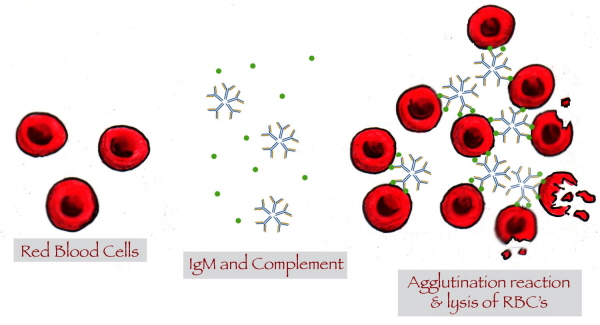Blood Transfusions
Pathophysiology and diagnosis
- One of the most severe transfusion reactions is the acute hemolytic transfusion reaction (AHTR).
- AHTRs occur in about 1 in 38000 transfusions and have a mortality rate of about 1 in 30. In this life-threatening condition, immune-mediated intravascular hemolysis occurs as recipient (host) IgM antibodies bind to donor RBCs and activate complement almost always because of an ABO mismatch.
- The most common cause for AHTRs remains patient misidentification and clerical error. As such, it is extremely important to always verify the patient’s identity by checking the patient’s wristband and requesting verbal confirmation of identity from the patient directly, if possible.
- The classical signs and symptoms of an AHTR include fever, chills and hemolglobinuria. In addition, the patient may develop hypotension, pain at the IV site, nausea/vomiting, dyspnea, renal failure or bleeding due to DIC.
- A suspicion of AHTR may be confirmed by laboratory results showing a positive DAT, hemoglobinemia, hemoglobinuria, reduced haptoglobin, elevated bilirubin, elevated urine hemosiderin and renal abnormalities.
 |
| Hemolysis of RBCs by complement fixed by IgM; ©qscalpel (illustration by Sarah Moodie) |